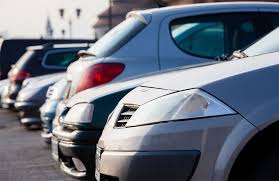A Call to Return to Retail-Back Used Vehicle Acquisitions
Since the start of the COVID-19 pandemic, everyone’s had their eyes on wholesale values for used vehicles.
The focus on wholesale valuation benchmarks like Manheim’s  MMR was necessary because the retail market had essentially stopped and the wholesale market effectively became the only source of liquidity and valuation data.
MMR was necessary because the retail market had essentially stopped and the wholesale market effectively became the only source of liquidity and valuation data.
But as we’ve all spent the past several weeks focused on MMR and other wholesale valuations to guide our used vehicle acquisitions, I believe the time has arrived when we can, and most definitely should, get back to the business of using the retail market to determine how we’ll get into cars we plan to sell to retail customers.
I’m making this call for two reasons:
First, the retail market is coming back on track. The latest stats I’ve seen suggest that, across the country, retail sales of used vehicles are only down approximately 10 percent from where they stood a year ago. A couple weeks ago, retail used vehicle sales were down upwards of 60 percent from the prior year. To be sure, we’d all like the market to come back faster and stronger. We’d all like to be selling more cars.
But the retail market is moving. It’s got liquidity. There’s sufficient sales volume today to trust the retail market data and use a “retail back” approach to acquiring inventory. (A quick definition for those who may need it: A “retail back” approach uses prevailing retail asking prices to help dealers determine how much to pay for an auction or trade-in vehicle. It follows the idea that the best way to get into a used vehicle is to know how you’ll get out of it.)
The second reason I believe it’s necessary to remind dealers of the relevance and value of the “retail-back” approach is that many seem to have forgotten about it altogether. It’s like the hyper-focus on MMR and other wholesale valuation guides has wiped away the memory of using retail data to determine what you’ll pay to acquire a used vehicle.
In the past several days, I’ve heard multiple dealers complain that they can’t find vehicles in the wholesale market, despite unprecedented levels of unsold supply. Inevitably, when I ask dealers to explain their trouble, I’ll find that they’ve been trying to purchase vehicles “back of MMR” without considering current retail prices.
Therein lies the problem. Dealers are returning to a wholesale market that’s already adjusted for current conditions. MMR values are down an average of 12 percent compared to pre-pandemic levels. The majority of auction sales are now occurring at or slightly above MMR. Dealers who limit auction acquisitions to cars that they can acquire “back of MMR” seem to be looking for a pot of gold or herd of unicorns that simply doesn’t exist in the current wholesale market.
I suspect if the dealers had been following a “retail-back” approach as they returned to auction, they would (or at least should) have noticed an unprecedented opportunity—the sizable gap that currently exists between wholesale and retail prices. This week, Cox Automotive data shows that this gap is now running close to $4,800 on average.
The gap has occurred because wholesale prices have fallen at a much faster rate in recent weeks than retail asking prices—about 12 percent and 2 percent, respectively. Cox Automotive’s data scientists say they’ve never seen such a high level of asymmetry between the wholesale and retail markets.
When you look at wholesale vehicles through a “retail back” lens, there is unquestionably plenty of profit-friendly vehicles available at auction. In fact, I’d submit that some of these vehicles may represent the best-grossing vehicle investments dealers have seen in some time.
But this opportunity won’t last for long. The wholesale-to-retail price gap will shrink as more dealers adjust their current retail asking prices on vehicles they purchased prior to the pandemic and retail out of this legacy inventory.
That’s why I’m encouraging dealers to dust off and don the “retail-back” glasses you left sitting on desks and shelves as you return to auction. When you do, you’re more likely to see a much larger number of vehicles that offer a significant, if short-lived, retail opportunity.
